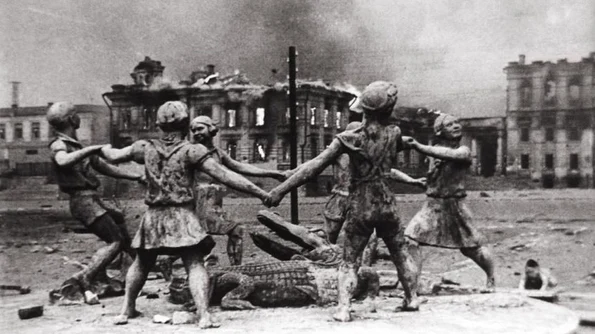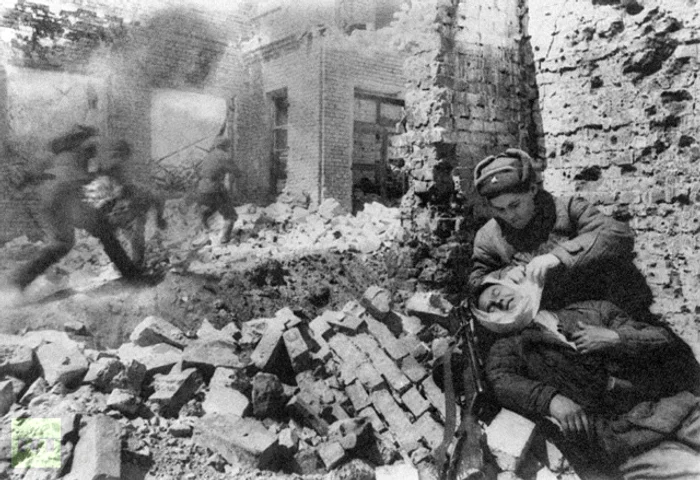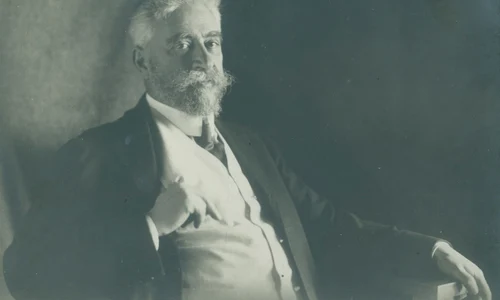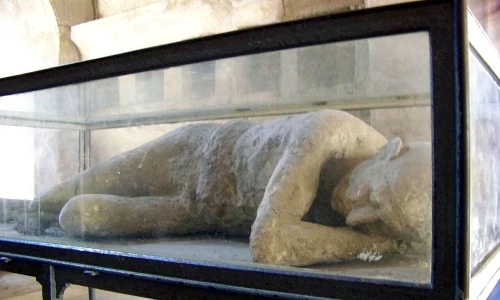
Battle of Stalingrad, the turning point of World War II in Europe
Battle of Stalingrad left behind one of the bloodiest pages of history.It was a battle that changed the destiny of countries that were involved in the fight.The loss of an entire German army will remain a gap that will never be filled by any subsequent action of the Wehrmacht.USSR was able to highlight its numerical superiority and encircle 290, 000 soldiers following the conclusion of Operation Uranus. Stalingrad was a white inferno, in which victory belonged to the one who was able to adapt their strategies to circumstances on the ground.There was fighting over not just every street, but every house, every entrance and every flat.
The German attack on Stalingrad and the strategic mistakes committed by Hitler

Aware that he cannot win a protracted war against the alliance between the USSR, Britain and the U.S., Hitler concluded that only a military strike can bring decisive victory in the USSR.Nazi Germany was aware that if she adopted the tactics of a war of attrition, it would have had no human resources or materials to defeat the USSR.
Fuhrer Directive No. 41 of 5 April 1942 set as target capturing oil resources of the Caucasus (oil fields from Maycop, Grozny and Baku).German war machine urgently needed an additional source of oil to wage a war against the alliance between the USSR, USA and Great Britain.In terms of military strategy, Wehrmacht sought to annihilate the Red Army south of the Don River through a series of encirclements.Hitler's directive was merely a statement of the German strategy, not a document based on a detailed plan.
In the plans developed by the Nazi leadership, the capture of Stalingrad was a secondary endpoint in the occupation of the Caucasus oil fields and the elimination of the Red Army in the south.
Operation Blau was designed to have 4 phases.In the first phase, the 4th Panzer Army and the 2nd Army commanded by general von Weichs had to move quickly to the east of Kursk region.In phase II, the 6th Army had to advance to the banks of the River Don near Voronezh and encircle the Red Army formations in the west bank of the river.In phase II, the 6th Army should have advanced to the banks of the River Don in Voronezh in order to encircle the Red Army formations in the west bank of the river.In the next phase, the German forces had to cross the Volga north of Stalingrad and await further orders to continue the offensive in the Caucasus.
In the run-up to Operation Blau, the German troops had to eliminate "pockets of resistance" Soviet of Crimea.
In 1942 German offensive mobilized three million soldiers, seeking a decisive victory to finish the campaign.The failure to capture Moscow in the winter of 1941 showed, however, that Nazi Germany did not have a good plan in place regarding obtaining a decisive victory.Hitler wanted to occupy some large territories but with fewer troops, which of course was not a feasible plan.In addition, bad roads and bad weather hampered much of the military supply lines of the Reich.The advancement of the army was not followed by a corresponding increase of supply lines.Despite the obtained victories at the start of the campaign in the east, the German Army was unable to sustain a strategic offensive along the entire eastern front.The only realistic option was the offensive on a single front.Seizing the oil fields of the Caucasus would have deprived USSR of 90% from the total oil reserves.
Army Group South , responsible for executing the mission, was split on July 9, 1942 in Army Group A (1 Panzer Army and 17th Army) and Army Group B (the 6th Army and 4th Panzer Army).Among the allied forces of Germany who participated in the Battle of Stalingrad, Romania had two armies: the 3rd Army commanded by Army General Petre Dumitrescu and the 4th Army commanded by General Constantin Constantinescu-Claps.Italy has the 8th Army and Hungary was present with the 2nd Army.
On July 23, 1942, through Directive No. 45, Hitler ordered a simultaneous attack towards Stalingrad and the Caucasus.While Army Group A advanced to the oil fields of the Caucasus (Maycop was occupied on August 9), General von Paulus and the 6th Army were ordered to attack Stalingrad on August 19, 1942.The strategy was to secure the advancement of Army Group A in the Caucasus.By September 26 most of Stalingrad was in German hands.

However, German troops failed to stop the penetration of Soviet reinforcements from the other side of the river Volga.What follows is a battle of attrition in which the Germans could no longer applies favorite strategy of "lightning war"(Blitzkrieg).Following intensive aerial bombardments, Stalingrad became a huge pile of rubble that prevented access for tanks.The last major German offensive in the city took place on November 11, 1942.The main mistake made by Hitler was one psychological.Germany showed an attitude of superiority to Russia due to the fact that since Peter the Great, German culture has played a major role in developing the institutions of Tsarist Russia.The administration and army of Russian empire was organized after the German model.
This superior attitude displayed by Hitler was completed by his volcanic character that often ignored the recommendations of his generals.The poor logistic planning of the operation in the Caucasus was Hitler’s mistake, who thought that the victory at Stalingrad can be obtained in a short time.German troops were completely unprepared to face a Siberian winter.Many German soldiers died because of keen frost, hunger or diseases such as typhus and dysentery.Hitler's strategy to not consider a strategic withdrawal from the Stalingrad area ultimately cost him the loss of the entire 6th Army.
How Red Army did won one of the most important battles in history

Regarding Soviet strategy, the most important decision was moving its entire war industries (about 1, 500 factories) in the Urals region. The fact that the Nazi army managed to advance so rapidly in the first phase of the campaign in the east was due to poor training and equipping of the Red Army.
Soviet counteroffensive strategy was devised by the Soviet High Command (Stavka).At the start of operations of Army Group South on June 28, 1942, Stalin was not yet sure whether Moscow was or not on the agenda of the German High Command.German aircraft piloted by Major Joachim von Reichel (operations officer in the Office of Operations of the 24th Panzer Army) who had in possession the plans of the Operation Blau, crashed on June 19, 1942 in the area controlled by the Red Army.Although they owned the battle plans, the Soviets were skeptical of the veracity of the information, taking into account a German plan of deception.
On July 12 the Stalingrad front is formed, and with the beginning of German offensive, the state of siege is declared in the city on August 25, 1942.But the most important was the political mobilization of the Soviet Union to rally the entire population against the German invader.An atmosphere of homeland in danger had settled among the entire Soviet society.The occupation of Rostov(July 23, 1942) by the Wehrmacht accentuated the grave crisis through which the USSR was passing.Stalin's first political response to the crisis was the issuance of Order No. 227 (July 27, 1942) known by name “Not one step back”.The order acknowledged the grave situation through which the country was passing.Stalin understood finally that the army officers must be elected not according to political criteria, but on their professionalism.Marshal Georgy Zhukov and Aleksandr Vasilevsky were the main strategists of victory at Stalingrad.

Also, we should not underestimate the role of General Vasily Chuikov , the commander of the 62nd Army.With reduced military forces, Chuikov manages to maintain positions in Stalingrad, establishing a bridgehead for Soviet forces stationed on the other bank of the Volga. He developed the tactic of “hugging the enemy", which consists in keeping the front lines very close to each other (10-15m). This tactic put Luftwaffe unable to launch air strikes without the risk of hitting their own positions.
Unlike Chuikov, who was an excellent field commander, von Paulus did not have the necessary qualities to lead directly an army in a theater of operation, although previously it was an excellent officer in the Office of Planning.General von Paulus failed to match the previous commander of the 6th Army, Walter von Reichenau.
The Soviets were preparing their counteroffensive, training approximately 1 million soldiers to launch Operation Uranus, who will lead to the encirclement of the 6th Army led by von Paulus. Information provided by Romanian troops ( 3rd and 4th army) that flank the German army made it very clear that the USSR is mobilizing its troops for an attack in order to encircle the Axis forces in Stalingrad.All warning signals sent by Romanian commanders were overlooked by the German High Command, which decided to delay sending reinforcements to defend the flanks.

Operation Uranus begins on November 19 with attacks on the flanks guarded by Romanian forces in the south and north. Although they rejected the first attack, Romanian troops come to be completely outnumbered and with poor endowment. Nearly 27, 000 Romanian soldiers fall into captivity. Soviet forces were able to close the ring of encirclement near the town Kalach.290, 000 Axis soldiers come to be trapped east of the river Don.Hitler refused to approve the withdrawal on time, relying on Goring's plan who claimed that troops in the area can be supplied by air. In Hitler's mind, the encirclement of the 6th Army in Stalingrad was just a temporary matter.Erich von Manstein and 4th Panzer Army, under Operation Winter Storm (13-23 December 1942), failed to break the Soviet encirclement of the German 6th Army.Soviet counteroffensive managed to seal the fate of the 290, 000 soldiers trapped in the encirclement.Of these only 6000 will be able to return home.
The consequences of the Battle of Stalingrad
After the defeat at Stalingrad and the subsequent catastrophe in the battle of Kursk, the Germans have completely lost the strategic initiative on the Eastern Front.As General Douglas Macarthur later said , at stake in the Stalingrad campaign was Germany's ability to wage war against the Soviet-Western alliance for another 10 years.Even after the Battle of Stalingrad, Nazi Germany did not give up the war of annihilation which he practiced early in the campaign in the East.The retreating Nazi Army set fire to villages and towns and dynamited railways and bridges to slow the advance of the Red Army.A lot of civilians located in the occupation zones of Nazi Germany were executed in retaliation for the defeat at Stalingrad.
Victory at Stalingrad was the hope of victory for the Allies, showing that the Wehrmacht was not invincible.Neutral states which until then had a friendly attitude towards Nazi Germany (Spain, Sweden and Turkey) will interrupt diplomatic relations with the Reich. In the Battle of Stalingrad, the casualties and material losses of Nazi Germany exceeded all summed up losses until then, from the beginning of war. This loss will not be replaced by Germans who were already outnumbered early in the invasion of the Soviet Union.
For the Soviets, victory at Stalingrad created cohesion between the Red Army and political leadership, resulting in fewer errors in the planning of military operations.Equally important was the cohesion of the Soviet society.For Stalin, the turning point in the war was still the victory at Kursk.
Stalingrad was ultimately a battle of resources, both human and material between the two forces equally determined.The winner was the one that managed to mobilize forces in a better way and adapt to unpredictable circumstances.
Bibliography
1. Geoffrey Roberts, Victory at Stalingrad: The Battle that Changed History, Pearson Education, London, 2002.
2. Peter D. Antill, Stalingrad 1942, Osprey Publishing, Oxford, 2007, pp.31-38.
3. Geoffrey Jukes, Hitler's Stalingrad Decisions, University of California Press, Berkley, 1985.















